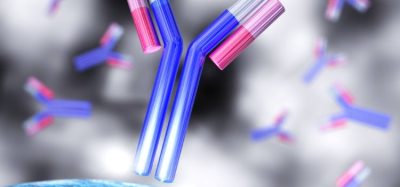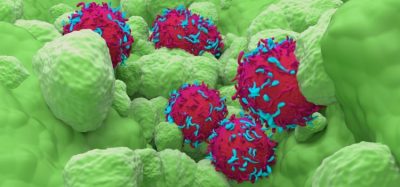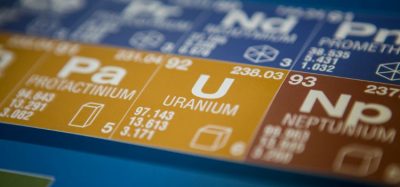Advancing endotoxin testing with sustainable recombinant LAL solutions
Posted: 10 July 2025 | FUJIFILM Wako Pure Chemical Corporation | No comments yet
The pharmaceutical industry faces mounting pressure to modernise its testing methods, driven by concerns over animal welfare, sustainability, and the need for more reliable results. Following a recent webinar, Fujifilm Wako discusses its Pyrostar™ Neo+ reagent and reveals how recombinant technology is transforming endotoxin testing while addressing evolving industry demands.


Traditional testing has relied upon an elegant biological system: horseshoe crab blood contains specialised cells that clot when exposed to endotoxins. This natural defence mechanism, refined over millions of years of evolution, forms the basis of Limulus Amebocyte Lysate testing. When LAL reagent encounters endotoxins, it triggers a cascade reaction leading to gel formation, cloudiness, or colour changes depending on the detection method employed.
The kinetic chromogenic assay exemplifies this process most clearly. Endotoxins activate Factor C, which triggers Factor B, ultimately leading to a proclottin enzyme that generates a measurable colour change through chromogenic substrates. This cascade amplifies the initial signal, enabling detection of extremely low endotoxin concentrations.
However, traditional LAL testing faces a significant challenge: the glucan pathway. Factor G in horseshoe crab blood can react with glucans—polysaccharides found in various biological materials—creating false positive results. This requires additional buffering steps or specially formulated reagents to ensure endotoxin-specific responses.
The drive towards sustainable alternatives
The pharmaceutical industry’s testing landscape continues to evolve, particularly where animal-derived methods face increasing scrutiny. The European Pharmacopoeia’s decision to abolish rabbit pyrogen testing by 2026 exemplifies this trend”
The pharmaceutical industry’s testing landscape continues to evolve, particularly where animal-derived methods face increasing scrutiny. The European Pharmacopoeia’s decision to abolish rabbit pyrogen testing by 2026 exemplifies this trend, reflecting growing emphasis on animal welfare considerations. Similarly, the harvesting of horseshoe crab blood, while not necessarily lethal, raises sustainability questions as pharmaceutical demand increases and environmental pressures mount on the arthropod populations.
Speed and timing concerns also drive method development. Cell and gene therapy products often possess extremely short shelf lives, making traditional multi-day testing protocols problematic. This creates demand for rapid, reliable alternatives that maintain safety standards while accommodating modern pharmaceutical development timelines.
ON-DEMAND WEBINAR: https://www.europeanpharmaceuticalreview.com/webinar/250054/advancing-endotoxin-testing-implementing-sustainable-recombinant-lal-solutions/
Understanding recombinant technology approaches
The industry has developed two distinct recombinant strategies, each offering unique advantages and considerations. Recombinant Factor C (rFC) technology uses only the initial factor from the horseshoe crab cascade, requiring fluorescent substrates and specialised plate readers to achieve adequate sensitivity. Although effective, this approach necessitates different equipment from traditional testing setups, potentially complicating laboratory transitions.
Both recombinant approaches eliminate the glucan reaction pathway entirely, removing the risk of false positive results that can complicate traditional LAL testing”
Recombinant Cascade Reagent (rCR) technology takes a more comprehensive approach, recreating the entire three-factor cascade using recombinant proteins. This includes Factor C, Factor B, and the proclotting enzyme, closely mimicking the natural horseshoe crab response. Crucially, rCR maintains compatibility with existing chromogenic detection methods and standard laboratory equipment, enabling seamless integration into established workflows.
Both recombinant approaches eliminate the glucan reaction pathway entirely, removing the risk of false positive results that can complicate traditional LAL testing. This represents a significant analytical advantage, potentially improving testing reliability and reducing the need for additional validation steps.
Regulatory framework evolution
The regulatory landscape demonstrates varying degrees of acceptance for recombinant technologies across major pharmacopoeias. The European Pharmacopoeia included rFC testing in 2021 through chapter 2632, though rCR technology still requires validation. Recent draft revisions suggest further integration, with rFC potentially becoming method G in chapter 2614, which would make the separate RFC chapter obsolete.
The US has moved more decisively. USP Chapter 86, now official, describes alternative methods alongside traditional LAL testing in Chapter 85, treating both rFC and rCR equally. The regulatory confidence becomes evident when considering that pharmaceutical products tested using rFC have received approval since 2018, demonstrating practical acceptance of recombinant methods.
Pyrostar™ Neo+: a comprehensive solution
Fujifilm Wako’s Pyrostar™ Neo+ exemplifies the rCR approach, offering several compelling advantages for laboratories considering the transition to recombinant testing. The reagent provides exceptional sensitivity across a quantitative range from 0.001 to 50 endotoxin units per millilitre, enabling detection of extremely low contamination levels while accommodating higher dilution rates for complex sample matrices.
Recombinant LAL testing requires no additional buffers, uses standard chromogenic detection methods, and maintains compatibility with existing equipment”
The practical advantages extend beyond sensitivity. Recombinant LAL testing requires no additional buffers, uses standard chromogenic detection methods, and maintains compatibility with existing equipment including microplate readers, tube readers, and automated systems. Storage and handling mirror traditional LAL reagents, with reconstituted material remaining stable for four hours refrigerated or two weeks frozen, minimising disruption to established laboratory procedures.
Validation and performance evidence
Comprehensive validation studies have shown that Pyrostar Neo+ demonstrates equivalence to traditional LAL methods across essential performance metrics (the supporting data is available upon request).
Third-party validation and industry experience
Independent research reinforces these promising results. Studies comparing multiple recombinant reagents to traditional methods confirm the specificity, accuracy, and precision of rCR technology across different laboratory environments. Manufacturer-independent studies particularly strengthen confidence in the technology’s robustness and reliability.
Industry implementation experiences prove equally encouraging. One of the speakers on the panel described a case study which saw successful conversion of 73 out of 75 pharmaceutical products to recombinant testing, with actual implementation proving far simpler than initially anticipated. Most cases required direct substitution without additional adjustments, suggesting that industry concerns about implementation complexity may be overstated.
The validation demonstrates coverage across all critical categories: specificity through supplementary and published data, range and linearity through primary validation studies, accuracy and precision through comprehensive testing protocols and robustness through time-course studies and independent research. This comprehensive evidence base supports regulatory acceptance and practical implementation.
Future implications and sustainability
The transition to recombinant LAL testing represents more than technological advancement—it embodies the pharmaceutical industry’s growing commitment to sustainable practices without compromising safety standards. As regulatory frameworks continue evolving and performance data accumulates, recombinant solutions like Pyrostar Neo+ offer a compelling path towards improved endotoxin testing that maintains the rigorous safety standards patients deserve.
Related topics
Drug Development, Drug Safety, Endotoxin, Endotoxin Detection, Industry Insight, QA/QC, Sustainability, Therapeutics









